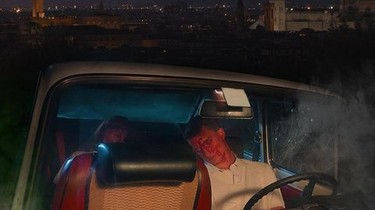Vatican Girl: The Disappearance That Won’t Stay Buried
- Trevor Verbiest
- May 12
- 4 min read

The heat in Rome was stifling on June 22, 1983, the kind that makes the air feel thick and heavy. Fifteen-year-old Emanuela Orlandi had just finished her music lesson at the Tommaso Ludovico Da Victoria School. She called her sister from a payphone, mentioning a strange job offer from a man claiming to work for Avon Cosmetics. Then, she was gone.
What should have been a routine walk home turned into one of the Vatican’s most infamous cold cases. Emanuela wasn’t just any Roman teenager—she was a Vatican citizen, the daughter of an employee who worked directly for the Holy See. Her family lived inside the walls of the world’s most secretive city-state, a place supposedly protected by faith and power. But that power did nothing to bring her home.
Her disappearance sparked chaos. Tips poured in—some claimed she was alive, others tied her to a political scheme. The Orlandi family received cryptic calls from unidentified men speaking in code, which sent investigators in circles. Adding to the mystery, another young woman had vanished from Rome just a month prior. Were the cases connected?
The theories started immediately. One involved the Banda della Magliana, a powerful Roman mafia group that allegedly used her as leverage over the Vatican Bank. Another claimed she had been trafficked by a network operating within the church. And then there were the whispers—rumors that Emanuela never left the Vatican at all.
One of the most sinister claims suggested she was forced into a secret life as a sex slave for high-ranking church officials. The idea, once dismissed as a conspiracy, gained traction when Pope Francis himself was confronted by Emanuela’s brother, Pietro Orlandi. His response? Silence.
Seàn-Patrick Lovett, a longtime Vatican media official, believes one thing is certain: “I am convinced that she was taken.” He speculates she may have been trafficked but doesn’t know by whom. “At the time, they didn’t see that there was a Vatican connection.”
For years, the Vatican treated Emanuela’s case as an external matter, insisting she disappeared outside its jurisdiction. However, their refusal to cooperate with investigators, combined with the fact that they didn’t launch their inquiry until 2019, only fueled suspicions.
That year, after public pressure, the Vatican allowed an excavation of two tombs in the Teutonic Cemetery, based on an anonymous tip suggesting Emanuela’s remains were hidden there. The search came up empty and created new theories when the skeletons were missing. Around the same time, a leaked document surfaced, allegedly showing that the Vatican had secretly funded Emanuela’s captivity in London for years. But Lovett, among others, questioned its authenticity.
Interest in the case exploded again in 2022 when Netflix released Vatican Girl: The Disappearance of Emanuela Orlandi. The docuseries introduced new witnesses, including a childhood friend who claimed Emanuela had confided in her about being “bothered” by someone “close to the Pope.”
It was also the first time Emanuela’s sister had spoken publicly. Meanwhile, Pietro Orlandi doubled down, using the docuseries’ visibility to push for new investigations. Lovett acknowledges that media coverage has kept the case alive. “If it were not for Netflix, would they still care about this case nearly 40 years later?”
The Vatican, however, has remained tight-lipped, often dismissing Pietro’s accusations as exaggerated. His relentless pursuit of justice has made him a thorn in the Church’s side, but his efforts have also been instrumental in keeping the case in the public eye.
In early 2023, Pietro made his most shocking claim yet—accusing Pope John Paul II of sneaking out at night to engage in misconduct with his “minions.” While many dismissed it as a desperate bid for attention, the Vatican’s furious response suggested he had touched a nerve.
“Abuse has existed always and everywhere in history,” Lovett said. “But when it exists in a religious institution, it causes scandal and outrage.”
Pope Francis has been more vocal about church reform than his predecessors, implementing safeguarding protocols across Catholic organizations. But even he has done little to provide real answers about Emanuela’s case. The Vatican’s official stance has shifted—first denying involvement, then reluctantly opening an internal investigation, and now, admitting they have a classified file on her disappearance.
In late 2024, Vatican chief prosecutor Alessandro Diddi confirmed the Holy See had “found” a previously denied file on Emanuela. The document reportedly contained information contradicting the Vatican’s long-standing claim that they had no internal records.
For now, the question remains: Will the truth ever come out?
Lovett, who spent over four decades inside the Vatican, remains doubtful. “I hope there is closure,” he said, though he fears that when Pietro dies, so will the case’s momentum. “The case will go away when Pietro passes.”
But Emanuela’s story is bigger than one girl. It’s about power, secrecy, and an institution avoiding accountability. The Vatican, a city-state preaching transparency while hiding behind secrecy, remains at the center of a mystery that won’t go away. Whether the full truth ever comes out, Emanuela’s disappearance serves as a reminder: some stories refuse to be buried.


